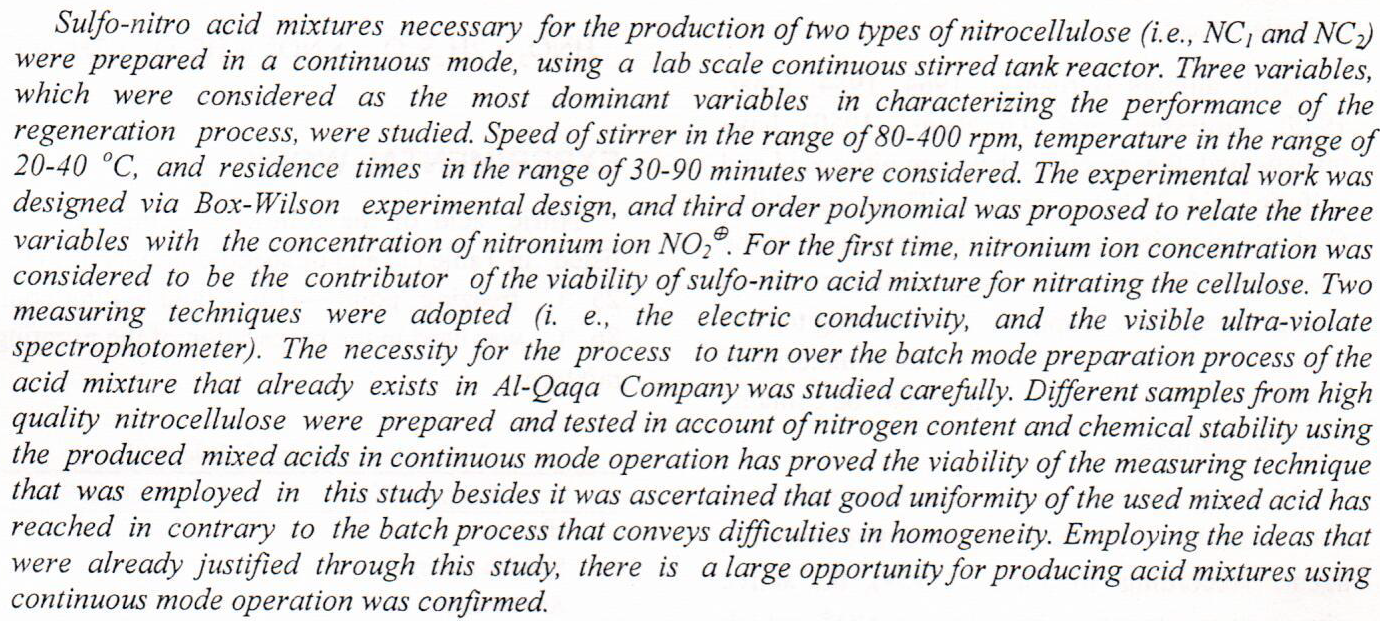
This study aimed at comparing the performance of vertical, horizontal and hybrid subsurface flow systems in secondary treatment for the effluent wastewater from the primary basins at Al-Rustumia wastewater treatment plant, Baghdad, Iraq. The treatments were monitored for six weeks while the testsduration were from 4 to 12 September 2018 under continuous wastewater feeding for chemical oxygen demand (COD), total suspended solid (TSS),ammonia-nitrogen(NH4-N) and phosphate (PO4-P) in comparison with FAO and USEPA standards for effluent discharge to evaluate the suitability of treated water for irrigation purposes. Among the systems planted with Phragmites Australia, the hybrid subsurface flow system which cons
... Show More (4)
(4)
The research explores the confessional aspect in Audre Lorde's poem" Who Said It Was Simple ". Lorde depicts her personality under the stress of race, sex and sexuality. She discloses her own bitter experience concerning racism, sexism and sexuality in her poem to revive the retrospective truth of the Afro-Americans' life in the USA. This publicly manifestation of her personality and tribulation throughthe language ofpoetry has been regarded as the hallmark of confessional poetry.
The accurate 3-D coordinate's measurements of the global positioning systems are essential in many fields and applications. The GPS has numerous applications such as: Frequency Counters, Geographic Information Systems, Intelligent Vehicle Highway Systems, Car Navigation Systems, Emergency Systems, Aviations, Astronomical Pointing Control, and Atmospheric Sounding using GPS signals, tracking of wild animals, GPS Aid for the Blind, Recorded Position Information, Airborne Gravimetry and other uses. In this paper, the RTK DGPS mode has been used to create precise 3-D coordinates values for four rover stations in Baghdad university camp. The HiPer-II Receiver of global positioning system was used to navigate the coordinate value. The results wil
... Show More (3)
(3)
The heat exchanger is a device used to transfer heat energy between two fluids, hot and cold. In this work, an output feedback adaptive sliding mode controller is designed to control the temperature of the outlet cold water for plate heat exchanger. The measurement of the outlet cold temperature is the only information required. Hence, a sliding mode differentiator was designed to estimate the time derivative of outlet hot water temperature, which it is needed for constructing a sliding variable. The discontinuous gain value of the sliding mode controller is adapted according to a certain adaptation law. Two constraints which imposed on the volumetric flow rate of outlet cold (control input) were considered within the rules of the proposed
... Show MoreThe heat exchanger is a device used to transfer heat energy between two fluids, hot and cold. In this work, an output feedback adaptive sliding mode controller is designed to control the temperature of the outlet cold water for plate heat exchanger. The measurement of the outlet cold temperature is the only information required. Hence, a sliding mode differentiator was designed to estimate the time derivative of outlet hot water temperature, which it is needed for constructing a sliding variable. The discontinuous gain value of the sliding mode controller is adapted according to a certain adaptation law. Two constraints which imposed on the volumetric flow rate of outlet cold (control input) were considered within the rules of the proposed
... Show MoreThe flexible joint robot (FJR) typically experiences parametric variations, nonlinearities, underactuation, noise propagation, and external disturbances which seriously degrade the FJR tracking. This article proposes an adaptive integral sliding mode controller (AISMC) based on a singular perturbation method and two state observers for the FJR to achieve high performance. First, the underactuated FJR is modeled into two simple second-order fast and slow subsystems by using Olfati transformation and singular perturbation method, which handles underactuation while reducing noise amplification. Then, the AISMC is proposed to effectively accomplish the desired tracking performance, in which the integral sliding surface is designed to reduce cha
... Show More (68)
(68)
 (62)
(62)
Field experiment conducted to measure vibrations on three axes longitudinal X, lateral Y and vertical Z on steering wheel, platform tractor and vertical vibration in seat tractor and seat effective amplitude transmissibility (SEAT) factor during operation tillage in silt clay loam soil with depth 18 cm in Baghdad. Split – split plot design under randomized complete block design with three replications least significant design 5 % used. Three factor were used in this experiment included two types of plows included chisel and disc plows which represented main plot, three tires inflation pressure was second factor included 1.1 ,1.8 and 2.7 bar, and three forward speeds of the tillage was third factor included 2.35 , 4.25 and 6.50 km/hr. Resu
... Show More (185)
(185)
 (164)
(164)
This paper discusses a comparative study to relate parametric and non-parametric mode decomposition algorithms for response-only data. Three popular mode decomposition algorithms are included in this study: the Eigensystem Realization Algorithm with the Natural Excitation Technique (NExT-ERA) for the parametric algorithm, as well as the Principal Component Analysis (PCA) and the Independent Component Analysis (ICA) for the non-parametric algorithms. A comprehensive parametric study is provided for (i) different response types, (ii) excitation types, (iii) system damping, and (iv) sensor spatial resolution to compare the mode shapes and modal coordinates of using a 10-DOF building model. The mode decomposition results are also compared using
... Show More (1)
(1)
 (4)
(4)
 (4)
(4)
